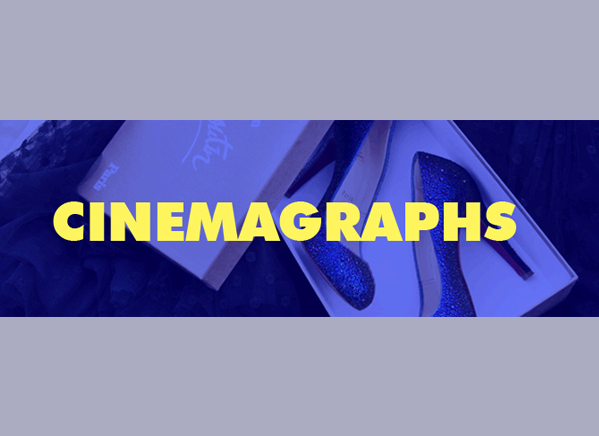Like many, I had my fingers crossed for cinemagraphs at the beginning of this year. To my disappointment, the web designing industry didn’t welcome this trend with open arms. But I am hopeful this time. My gut feeling is that cinemagraphs are going to make it big in 2016.
An immersive experience
In theory, cinemagraphs are high quality images that move. But in practice, they are much more than that. A cinemagraph delivers an experience, which is vibrant, entertaining and delightful. It’s artistic, captivating and impressive. I bet when you land on a website with cinemagraphs, you stay there for few extra seconds before closing the tab or switching to another website.
Here’s the link that takes you to some successful examples of cinemagraphs. In this article, I’ll help you Familiarize yourself with cinemagraphs, assuming you are not familiar with them already.
But we already have GIFs
That’s right. A cinemagraph is a .GIF file, but there’s a difference between regular GIFs and cinemagraphs. A regular GIF file is often a video clip. A cinemagraph, on the other hand, has a tricky technique behind it.
A cinemagraph refers to an image with a moving part. The image is static, except for a particular area in it, which moving. This technique relies on combining looping videos with stills that are high in quality.
A marketing leverage
You might think it’s too early to predict, but cinemagraphs can indeed function as leverage for brands in their pursuits of generating leads. With the use of cinemagraphs, a marketer can increase the number of site visitors, and even grab himself few qualified leads.
The accurate use of cinemagraphs relies on the way human eyes move. Our eyes can detect movements. We discover movements in cinemagraphs, which are originally static images and then we feel drawn to the site. This increases the site’s retention rate. As the bounce rate decreases, the odds of netting leads eventually go up.
Peak of aesthetic
Not all cinemagraphs are equally appealing. Some leave a hypnotic effect on us while some others are mundane. For a cinemagraph to be visually appealing, a professional photographer and an experienced graphic artist need to work collaboratively.
The photographer needs to capture great quality pictures. It’s always better to capture a top-quality photo than doing after-edits on Photoshop. Aside from that, the photographer needs to capture a motion. The motion should be subtle, not very sharp. The graphic designer, on the other hand, needs to meticulously edit the image.
Cinemagraphs allow a designer to fully exhibit his designing skills. There’s hardly any point in rendering a cinemagraph, which is of average or below-average quality. The aesthetic appeal, disgorged by the still should be of the highest quality.
Consumes less bandwidth
A lot depends on the file size. A site with plenty of images and videos on it loads slower than another site, which doesn’t have too many of them. A huge benefit of cinemagraphs is they consume less bandwidth. As a result, the size of a cinemagraph GIF file is fairly small.
You can put a number of contextual cinemagraphs on the site and still keep it a fast-loading one. From the SEO perspective, quick and instantaneous loading is a great benefit. This implicates putting cinemagraphs on the site is a SEO-friendly practice.
Social media hoopla
You may refuse to call it a hoopla, but I am sure you’d call it a recent fad. On social networks, especially on Facebook, cinemagraphs are very effective in increasing the reach of organic as well as paid campaigns. Here’s a blog post that discusses how the marketing prospects on Facebook are becoming grim, and how numerous brands are fighting with each other to book a spot on the news feed.
Cinemagraphs can lend a brand a hand. Imagine you see a thumbnail sized image on your news feed, which is moving. I bet you’d be interested to click on it. This is what digital marketers want, a good return on investment. They can run pay-per-click campaigns on social networks using cinemagraphs.
In 2016
Some designers are of the opinion that cinemagraphs will revolutionize the web designing industry in 2016. It might sound exaggerated. The plausible conclusion, therefore, would be that the importance of cinemagraphs will increase even more, and the marketing world will become dependent on it.
Image Courtesy: designjunkies.co




